There are no sure things in the NFL draft, but quarterback might be the riskiest position of all. No defense revolves around a single player the way every offense revolves around the quarterback. Trust your offense to the wrong young quarterback and your team isn't going to climb back into playoff contention. Recent history is littered with teams that drafted a quarterback high only to find out that player couldn't compete at the NFL level.
The lessons of history can at least help us figure out how much of a risk each quarterback prospect will be. That's the point of Football Outsiders' Quarterback-Adjusted-Stats-and-Experience (QBASE) projection system. It looks at college performance, experience and expected draft position (to incorporate scouting information that college stats will miss). To allow some time for development, QBASE projects a quarterback's efficiency (passing only) in years three through five of his career according to Football Outsiders' defense-adjusted yards above replacement (DYAR) metric. Fifty-thousand simulations produce a range of potential outcomes for each prospect, with players drafted later generally having a larger range of possibilities.
QBASE favors quarterbacks expected to go high in the draft who also have a relatively long résumé of college success according to the stats. Those stats include completion percentage, yards per attempt and team passing efficiency. These numbers are adjusted both for the quality of the defenses that a prospect had to face as well as the quality of his offensive teammates.
There has been a lot of debate about whether any quarterbacks will go in the top 10 picks of the 2017 draft, and QBASE suggests that none of this year's prospects really deserves to go that high. None of these players has a projection to match the best quarterbacks drafted in recent years. The highest-rated among them come with big questions about experience or about whether their college schemes affect our ability to translate college performance to the NFL.
One reason for this year's mediocre projections is that the top prospects of the 2017 draft did not lead the top passing offenses of the 2016 college season. College production isn't the only indicator of whether a quarterback translates to the NFL level, but usually the top-drafted quarterbacks have played for top-10 passing offenses according to Football Outsiders' Passing S&P+ ratings.
In 2014, for example, Oregon (Marcus Mariota) ranked fourth in Passing S&P+, while Florida State (Jameis Winston) was seventh. The year 2011 is another strong example, as Wisconsin (Russell Wilson) was No. 1, Baylor (Robert Griffin III) was No. 4 and Stanford (Andrew Luck) was No. 10. Cam Newton and Sam Bradford also led offenses that ranked No. 1 in Passing S&P+.
Only three of the top-10 passing offenses in 2016, however, were led by quarterbacks who are eligible for the 2017 NFL draft*:
*Note: This table leaves out Georgia Tech and Navy, as their passing ratings are the product of option offenses, for which pass plays tend to be successful because they are rare.
Zach Terrell isn't considered a serious NFL prospect, which leaves just Deshaun Watson and Joshua Dobbs in the top 10. North Carolina (Mitchell Trubisky) ranked No. 16 and Pittsburgh (Nathan Peterman) ranked No. 19, while this year's other top quarterback prospects all ranked below the top 20.
Every year, there are some draftniks who insist that next year is the really good year for quarterbacks, if teams are just willing to wait. Again and again, we hear this refrain only to see these young quarterbacks suffer in the eyes of the scouting community after another year of nitpicking. But this year, the "wait until next year" mantra for quarterbacks might be accurate.
Of course, it's hard to wait at the most important position in football. And there's still a good chance that at least a couple of this year's prospects will turn into reasonable NFL starters. Here are QBASE projections for eight quarterbacks that Scouts Inc. has rated among the top 120 players of the 2017 NFL draft:
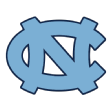
Mitchell Trubisky, North Carolina
Scouts Inc. ranking: 29
Trubisky might have had the most impressive single season of any of these prospects, with the highest completion rate (68.2 percent) and only six interceptions, as compared to 30 touchdown passes. But the risk with Trubisky is primarily related to one phrase in that sentence: "single season." In the past 25 years, only three quarterbacks have been chosen in the top 100 picks after only one year as a college starter: Brock Osweiler, Mark Sanchez, and Matt Blundin. If you're asking, "Who's Matt Blundin?" that's somewhat the point: the Kansas City Chiefs took him in the second round in 1992, and the Virginia product never started an NFL game.
This is not a good group of quarterbacks to be associated with, although Cam Newton is sort of attached with an asterisk. (He started only one year at Auburn -- but also a year at junior college.) You won't find many successful one-year college starters chosen below pick 100, either: Matt Flynn is probably the best among them. On the other hand, do we really learn anything from a group with such a small sample size? It's likely more accurate to compare Trubisky to quarterbacks with either one or two years as a college starter. Since 1998, that group has over 30 players chosen in the top 100 picks, instead of just three. With that in mind, we changed QBASE this year to treat players with one year of college experience the same as players with two.
Unfortunately, the track record of top-100 quarterbacks with only two college years started isn't particularly good, either. The best among them are Newton, Joe Flacco, Michael Vick, and Alex Smith. Ryan Tannehill and Jameis Winston might climb into those ranks. Aaron Rodgers could count as either a two-year or three-year starter, since like Newton, he also had a year starting in junior college. But for the most part, highly drafted quarterbacks with only two years of college starting experience have underperformed their draft position. These include some of the biggest busts in quarterback history, with JaMarcus Russell, Ryan Leaf, Akili Smith, David Carr and Sanchez among them.
Of course, there was a two-year college starter selected in the later rounds of the draft who turned out to be pretty successful in the NFL: Tom Brady. But Brady is the historical outlier of all outliers, not a historical precedent on which you base a top-five pick.
All college quarterbacks are a risk in the NFL. Does Trubisky's lack of college experience somehow negate all that scouts see on film? No, but we're trying to determine here which quarterbacks are high risk and which quarterbacks are really high risk. Russell, Leaf and the other busts of the past also had glowing scouting reports. There's no question that, based on historical patterns, Trubisky's lack of starting experience makes him a particularly high-risk selection.

Deshaun Watson, Clemson
Scouts Inc. ranking: 32
There's an argument that Watson is guaranteed to bring strong leadership on the field, forged by the mental pressure of playing in high-profile playoff games. The statistical counterpart to this is that Clemson played the hardest schedule of opposing pass defenses in all of college football last season. That's part of the reason why Watson's Tigers were highest among these eight teams in Passing S&P+, which is adjusted for opponent strength.
On the other hand, Watson was helped by better teammates than most of these other top prospects. Wide receiver Mike Williams stands out the most, although wideout Artavis Scott and tight end Jordan Leggett are also expected to be drafted this year. There are a number of underwhelming NFL quarterbacks who built their college production on a highly drafted receiver who was the better NFL player, including Johnny Manziel (with Mike Evans), JaMarcus Russell (with Dwayne Bowe), and Jimmy Clausen (with Golden Tate). Then again, our Playmaker Score system indicates Williams might be a bit overrated by scouts, so the QBASE system could be overestimating his effect on Watson's performance.
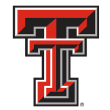
Patrick Mahomes, Texas Tech
Scouts Inc. ranking: 47
Mahomes has the highest QBASE projection in the Class of 2017. He led all college quarterbacks last year in expected points added on passing plays. He's only 21 years old, so he has room to grow. And he also was a three-year starter at Texas Tech, so he has experience. He put up huge numbers, despite the fact that none of his receivers or offensive linemen is likely to be drafted either this year or in 2018.
Nonetheless, Mahomes' projection sets off alarm bells -- or more specifically, loud Air Raid sirens. Every single prospect from an Air Raid offense has underperformed his QBASE projection in the NFL, although obviously you can't shut the book on Jared Goff after just one season. Playing in an Air Raid offense doesn't mean Mahomes' skills can't translate to the NFL, but it seems clear at this point that the scheme juices passing stats in a way that leads to QBASE overestimating these prospects. Any team that wants to draft Mahomes probably needs to discount his college performance and be sure that his skills fit their offensive scheme.
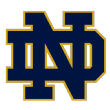
DeShone Kizer, Notre Dame
Scouts Inc. ranking: 50
Kizer was the only one of these eight prospects to complete less than 60 percent of passes last season, even though only Nathan Peterman faced an easier schedule of pass defenses. Notre Dame ranked No. 54 in Passing S&P+, nearly 20 spots below the seven other teams listed here. Kizer also benefited from the presence of next year's top offensive tackle prospect, Mike McGlinchey, and he has only two years of starting experience. There are better quarterback gambles to make in 2017.

Joshua Dobbs, Tennessee
Scouts Inc. ranking: 66
Dobbs seems to be this year's "late riser," getting talked up more and more as we get closer to the draft. Normally, these late-rising quarterbacks are players who dazzle in workouts but had unimpressive college production. That's not the case with Dobbs. As noted above, Dobbs and Watson are the only 2017 prospects who had their teams in the top 10 of our college passing ratings, and the Volunteers faced the No. 2 toughest schedule of opposing pass defenses, trailing only Clemson. Dobbs' stats were much better in his senior year than in previous seasons, but that usually suggests quarterback growth rather than a one-year wonder. Dobbs is this year's best chance at finding a starting-quality quarterback with a middle round pick.

Nathan Peterman, Pittsburgh
Scouts Inc. ranking: 75
Dobbs won the Tennessee job over Peterman, who then transferred and got two years as a starter at Pitt. Last season, he led these eight prospects with 10.1 adjusted passing yards per attempt (passing yards with a 20-yard bonus for touchdowns and a 45-yard penalty for interceptions). He did this, however, against the easiest schedule of any of these eight prospects, ranked 59th in FBS, and with the benefit of an offensive line that's likely to get two linemen drafted in the first four rounds (guard Dorian Johnson and tackle Adam Bisnowaty). Combine these facts with a lower expected draft position, and QBASE is very pessimistic about his chances for NFL success.
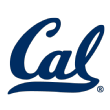
Davis Webb, California
Scouts Inc. ranking: 105
The Air Raid siren that went off for Mahomes goes off even louder for his former teammate Webb, since Webb's numbers after transferring to Cal were nowhere near as impressive as the numbers Mahomes put up at Texas Tech. Webb had just 7.3 adjusted passing yards per attempt last season, the lowest of these eight prospects. His numbers weren't really any better in his two years as the starter at Texas Tech in 2013 and 2014. QBASE does like the fact that he has three years of starting experience and that Cal played the No. 9 schedule of opposing pass defenses last season.
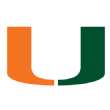
Brad Kaaya, Miami (Fla.)
Scouts Inc. ranking: 111
Kaaya is this year's top quarterback who is probably the product of his environment. Tight end David Njoku might be a first-round pick, and it's likely that four of Kaaya's five starting offensive linemen will be drafted either this year or next. Despite all this talent, Miami was just 35th in Passing S&P+ in 2016. Overall, QBASE agrees with conventional wisdom that Kaaya is a later-round pick with an NFL future as a backup.
